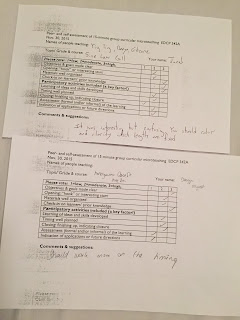In his article, Mason looks at what types of questions are asked in a math classroom. He argues that there is a certain way of asking questions which invites students to deepen their understanding of mathematics in an authentic way. Asking questions in a way which does not presume that there is one, concrete answer which the teacher already has in mind, fosters a way of approaching mathematics which is more inquiry-based. If students feel that the teacher is authentic when he/she asks for the students' help in solving a problem, they will feel more inclined to develop an original approach to arrive at the desired solution. If the students don't feel constrained by the narrowness of a question, they may feel free to take a broader, more inquiry-based, approach to solving the problem.
During my long practicum, I must be careful not to give students very narrow questions which I already have pre-determined answers to. I must try believe more in the students' ability for original and creative thought. Hence, I must take an approach, like Mason's, to ask students broader questions, questions which allow for a multitude of answers, and questions which can ultimately foster the understanding of the students.









